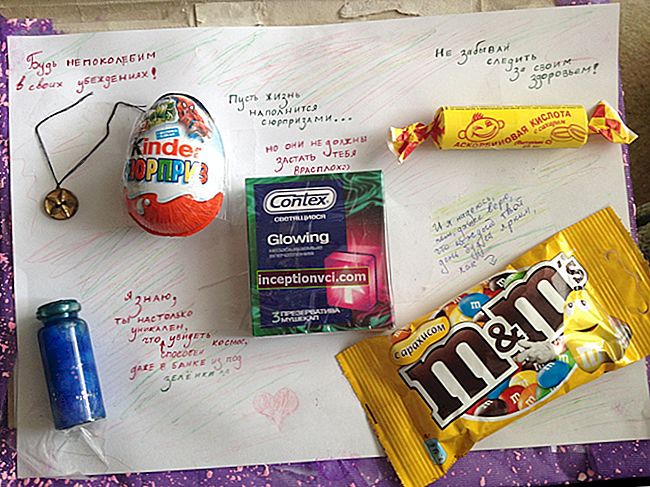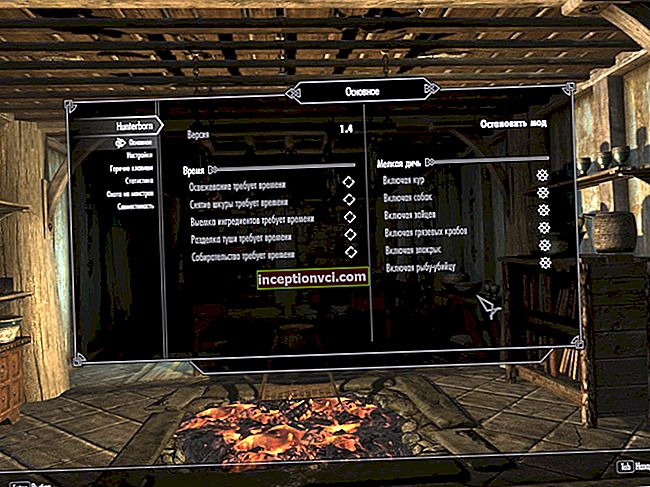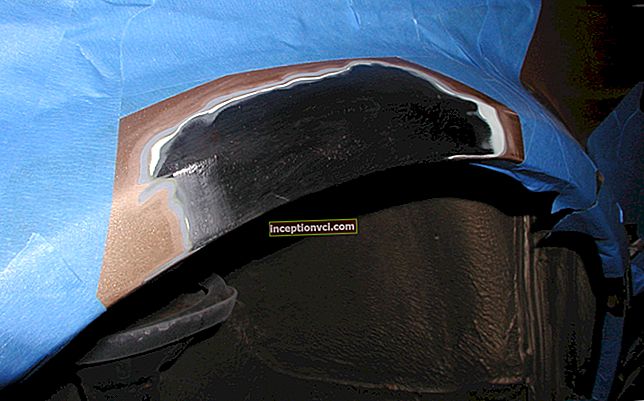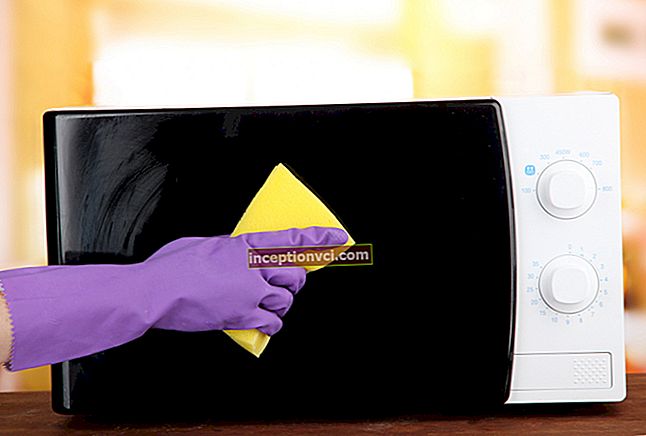Overview of vinyl flooring
Heavy-duty vinyl flooring is a great choice for kitchens and bathrooms because they are easy to keep clean. They are durable, water-resistant, do not fade, stains or dents.
Vinyl floors, also called resilient floors, come in a variety of colors, textures, and patterns. The gravure printing process, rotogravure (a fancy term for an image engraving technique), which is used to create flexible coatings, helps the coating mimic wood, tile, and even marble.
Vinyl is supplied in sheets, boards and tiles, which creates space for imagination in terms of shape and pattern of the coating. Contrasting vinyl sheets are used to create large models of the design. The tiles can be arranged in such a way that you want to see them in a particular room. You can think of a checkerboard pattern, stripes and dizzying diagonals. Or choose vinyl planks that look like wood floors.
Thick vinyl, like carpet, is flexible and soft enough to make it a pleasure to walk on. What's more, vinyl adheres easily to almost any substrate, even if it isn't perfectly flat.
If your desire for beauty is driven by budget and practicality, then choosing a resilient vinyl floor is the perfect solution. You will get a floor covering that is great looking, durable, at an affordable price.
Production of vinyl flooring
Vinyl is, in fact, a very versatile plastic. We use vinyl records, vinyl shoes and wallpaper. But the most popular is vinyl as a floor covering.
Vinyl floors are made up of multiple layers of material: the interior is vinyl backing and the base is felt or fiberglass. The decorative elements are imprinted on the top of the vinyl core. This is the decorative layer that makes vinyl floor coverings so versatile. Vinyl can mimic just about any material. The top layer also consists of vinyl and is called the wear layer.
Rotogravure
The versatility of vinyl flooring is provided by a printing process called rotogravure (gravure printing). Using a rotary press and plates, which represent the engraving of the final design, you can simulate the appearance of stone, brick, marble, wood and hundreds of other models and structures. Some manufacturers add colors or colored vinyl inserts to the wear layer. This adds a lot of depth to the design.
Wear layer
The top wear layer is the most important layer in the coating structure. This layer has an average thickness of about 10 mm. The thicker the wear layer, the more durable the floor covering. Manufacturers in the flooring industry are constantly experimenting with the characteristics of this layer, in order to create a harder and more durable, but at the same time, beautiful and practical flooring.
Heavy-duty vinyl flooring offers the following benefits:
Exposure to fine gravel and sand can scratch the vinyl surface, resulting in deterioration of the finish. By placing rugs at the entrance to your room, you can extend the life of your vinyl floor. Make sure you buy rugs designed specifically for vinyl floors. Some rubber mats may leave stains or marks. Given the beauty, durability of vinyl flooring and an attractive budget, it is easy enough to find vinyl flooring to suit your lifestyle.
Style solutions
Vinyl flooring is as versatile as tile, laminate and carpeting. The variety of colors, textures, patterns and designs of vinyl flooring allows you to activate any imagination. Vinyl flooring has been called the "great imitator." After all, they can be made in the form of a coating of brick, stone, marble, linoleum or wood.
Vinyl is recognized as an irreplaceable coating all over the world. We love this finish in our kitchens, bathrooms and laundry rooms. It is practical, durable and very fashionable. Vinyl covering is suitable for any environment. It is warm and soft, like a feather bed underfoot, and is very easy to clean.
Dense vinyl flooring comes in a wide price range. More expensive materials come in a wide range of colors and textures, and their performance is very high. All these characteristics are achieved thanks to the characteristics of the wear layer: the harder and thicker this layer (in premium coatings), the more resistant to scratches, staining, the appearance of dents and tears the vinyl coating will be. In some vinyl coatings, the wear layer is reinforced with aluminum oxide for exceptional scratch resistance.
The process of choosing the right vinyl style and pattern
This procedure is the most interesting and the most important. So, you have made your decision. You want exactly vinyl flooring. Where to start the selection process to cut off unnecessary options?
How big is your room?
Let's start with the size of your room. Keep in mind that rooms appear smaller if the floor is dark and larger if you choose a lighter shade.
How big is the floor pattern?
Now let's look at the structure of the floor. Small patterns work best on coverings in small spaces where the picture will not be visually disturbed by furniture, such as a bathroom or dining table. On the other hand, to create the effect of a large space, you can choose a cover with a large pattern.
How will your flooring work with wallpaper or fabrics?
You need to think about what pieces of furniture or accessories will be in the room. Similar to the rules for choosing the right tie for a shirt, your flooring should have small patterns if the pattern on the wallpaper is large enough, and vice versa. A fabric or wallpaper with small patterns can look amazing when paired with a large patterned floor.
Matching the gloss of vinyl flooring
Vinyl has several gloss levels. The lower the gloss level, the more resistant the coating will be to everyday wear and tear. Your lifestyle is your reflection. It cannot be dictated by an outsider. There is no universal formula. Improvise. Discover exactly your vinyl flooring!
Before buying vinyl flooring
You have made your decision and are ready to select and install your new vinyl flooring. You already know that:
Before placing an order, decide on a few more important questions regarding coverage.
Thickness
A thick coating is not always what you are looking for. You need a coating with a thick wear layer. This is the topmost layer, the thickness of which really matters. It is the thickness of the wear layer that determines how well your floor will be protected from the effects of walking, resistant to cuts, tears and potholes. Consult your dealer for the coverage you are interested in.
Quality
Be sure to discuss the manufacturer's warranties and the performance of the coating with your retailer. You should understand that premium products should generally come with premium guarantees.
Seams
Vinyl sheets come in different widths. Depending on the configuration of your room, it may be necessary to roll the sheets. Make sure your salesperson can explain to you where to place the seams. Some types of coverings hide seams much better. For example, a tile with a solution applied along the seam looks quite beautiful.
In areas with heavy water use (for example, bathrooms and laundries), you may need to (selectively) replace heavy seals, especially in areas where floors are in contact with walls or the toilet. You don't want water to seep under the floor, do you?
The cost
"Price per square meter" is only one component of the total price for new vinyl flooring. The final cost may include additional cost:
Ask your dealer for a manufacturer's warranty and maintenance and operating instructions for your new floor.
It is recommended to add the cost of annual cleaning to the total cost of your project, which will help maintain the beauty and functionality of your new vinyl flooring.
Installing vinyl flooring
Life would be much easier if we were all a bit of magicians and wizards. You could levitate furniture while installing our new vinyl flooring, or do any job with a wave of your hand! We all know that this is not an easy and stressful enough exercise. But knowledge is power. Here is a rough list of what to expect during and after installation.
Trust the professionals
Of course, "your ex-friend's brother's uncle" can install your flooring cheaply, but you should still trust the professionals when installing vinyl flooring. This is a rather complicated process.
Work surface shape
The surface on which the vinyl flooring will be installed is called the substrate. Are you planning to install new flooring on wood floors, concrete backing, old vinyl? Each substrate requires special preparation. Your underlayment may require an additional underlay to be installed. This layer will add height to your floor and affect the performance of your appliances and meters.
For your warranty to be valid, many manufacturers require an air and surface moisture test when installing vinyl to concrete. Make sure your installer can do this test.
Remember, only a real professional will be able to tell whether it is permissible in your particular case to install a new vinyl covering over the old covering. Don't forget to ask him about it.
What is the condition of your floor?
Your old floor may need to be prepared for vinyl flooring. A complete replacement of the base may also be required. This issue should be discussed with qualified specialists. Make sure the subfloor is clean and level. This will help preserve the beauty of the finish and provide a strong bond between the new vinyl flooring and the substrate.
Methods for installing vinyl flooring
There are three methods for installing vinyl flooring:
The day before installation
Call your friends, hire a team of workers, in a word, do everything possible to ensure that all your furniture and other parts are removed from the room in which the vinyl covering will be installed in advance. After all, you do not want strangers-installers to touch your things. In addition, they may charge additional fees for carrying furniture and belongings.
If you have gas appliances, contact the gas service for a safe disconnection and reconnection of gas appliances in the room. Check with your supplier to see if they can disconnect and reconnect home appliances (such as stereo equipment and computers), take out heavy objects (such as a piano).
Also, consult your supplier about removing and installing, for example, a toilet, if you are changing the bathroom cover. If he cannot dismantle the toilet or bathroom, then you may need the services of a plumber.
Temperature regime
The room in which you plan to install a new vinyl covering must have an air humidity in the range of 45-65%.
Old cover
What are you going to do with your old coating? Throw it away? Install a new coating on it?
Removing the old coating takes time and has to be removed and disposed of by someone else. Discuss this issue with the installer, make sure you have at least one day left to dismantle the old coating, clean and prepare the work surface.
Equipment
In most cases, old skirting boards and moldings must be removed prior to installing vinyl flooring. Do you want to keep the items you have left or buy new accessories? Discuss this issue with your dealer or installer, because he may charge additional fees for removing old components and installing new ones. Once the installation is complete, it may be necessary to paint the skirting boards and may require a touch-up process for some of the elements.This task is completely entrusted to you.
Doors
Interior doors must have a gap between their bottom and the base of the floor in order to accommodate the new finish. If there is no such gap, then you may need the services of a qualified carpenter to cut or trim your doors after the cover has been installed.
Cleaning
The installation of vinyl flooring generates a large amount of debris - old carpets or flooring, plastic wrap, remnants of new flooring, food containers. If possible, all trash should be removed and disposed of. Just in case, you can save some leftover pieces of vinyl for future repairs.
Take a day off
It is advisable to be at home when installing your new coating. Naturally, questions will arise that will need to be answered and prompt decisions to be made. Every detail in the process of installing the coating will need close attention, and no one can follow the whole process better than you. Therefore, take a day off, sick leave, work from home - whatever you want to be at home that day.
Keep your distance
All kinds of cutters and sticky glue can make the vinyl covering area hazardous to the health of your children and pets. Find a comfortable place for them in another room or outdoors while installing the cover.
Final inspection
Before completing the installation process, it is important to walk around the work area with the person in charge of installing the cover and make sure that every detail is made to your expectations. Before making a final settlement with the installer, make sure the quality of the vinyl covering is installed and the quality of the work itself.
General Precautions After Vinyl Installation
Precautions depending on the installation method
Latest Tips
How to properly clean and maintain vinyl flooring?
It is in this state that you want to keep it. Carefully read the manufacturer's tips and tricks for cleaning and maintaining the coating.
The first day (preferably 2-3 days) after installing the coating, observe special precautions.
Keeping your coating clean is not difficult, but there are some guidelines to help you extend the life of your coating.
Gravel particles, dust and sand are the real enemies of vinyl flooring. Sweep and vacuum the floor as often as possible. Do not use the vacuum cleaner in the knock-out mode as this may scratch the floor. And do not use scraper brushes when cleaning.
In cases where sweeping or vacuuming is not enough to completely remove the dirt, wipe the flooring with clean warm water. If water alone does not clean the surface of the coating, use a detergent recommended by the manufacturer.
Do not use detergents containing abrasive particles or polishes.
It is also recommended to place rugs in front of the outer door to protect your vinyl flooring from dust and sand entering the room. Make sure the rugs you buy are designed specifically for vinyl floors. Some rubber mats can leave marks and stains on your surface.
Any stains or liquid that gets on the vinyl flooring should be wiped off as soon as possible.
Make your fairy tale come true with vinyl coverings from our online store!









